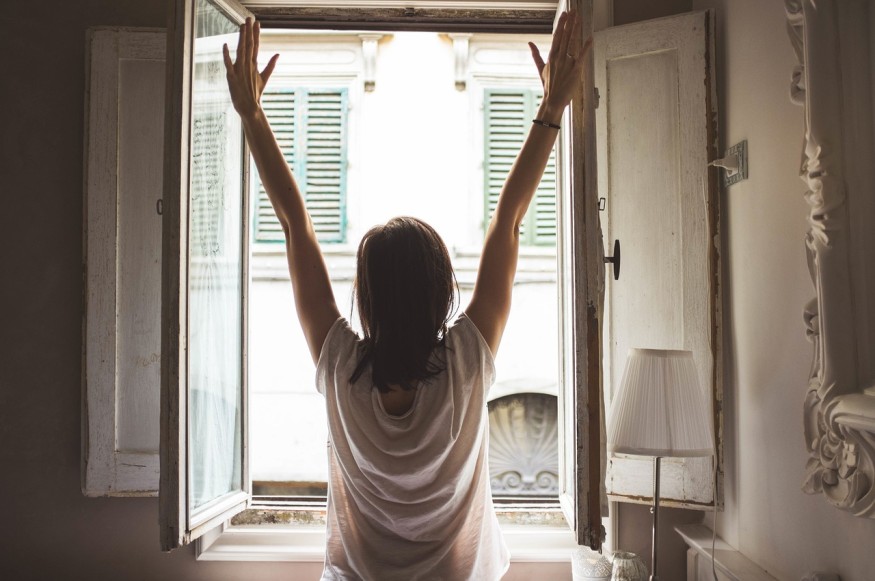The World Health Organization recently recommended the practice of regular exercise to reduce the risk of developing anxiety.
Forbes reported that physical activity during both leisure and at work, as recommended by the WHO, helps in the improvement and maintenance of both good health and wellness.
The anxiety rate has increased all over the world since the onset of the pandemic. More so, with the confusing flip flops from the workplace to remote, back to the office, then, hybrid working nowhere is stress higher compared to the tentative workplace.
According to a Gallop survey result, 80 percent of American workers are suffering from certain types of work anxiety disorder. Exercise is always known as essential for work-life balance, as well as productivity at work.
In fact, this report specified, lack of physical activities or movement can be as bad for an individual as smoking one pack of cigarettes.
ALSO READ : It May Feel Uncomfortable, But Wearing Mask During Exercise Should Not Damage Oxygen Intake

5 Best Anti-Anxiety Exercise Routines
New research published in Frontiers in Psychiatry measured the jaw-dropping effect regular exercise has in the reduction of a person's anxiety.
Specifically, Swedish researchers examined almost 400,000 individuals and discovered that those who have an active lifestyle are 60-percent less possible to develop anxiety than the less physically active individuals, over the period of 21 years.
Below are five of the best anti-anxiety exercise routines as recommended by Forbes. These exercises need not be strenuous, but they help enhance health, especially when you're feeling all the pressures brought by your job.
1. Do the Stretching
You can do this even when you're in the office. You can do the stretching by standing up, breathing deeply, shaking, twisting, and stretching out the "built-up tension." Take several seconds as you reach high.
Allow yourself to stretch as you extend your body and notice where you're holding tension, the release that holds. Shake that body part where you feel the tension.
As you continue stretching, bring your attention to each of your body parts that have stayed tight. Bend over, touch your toes and feel the stretch allowing the tension to evaporate in your body.
2. Opt for the Stairs Instead of the Elevators
If your work location has elevators or escalators, opt for the stairs, instead. According to Science Daily, climbing four steps of the stairs in less than one minute results in good heart health.
Therefore, instead of riding the elevator to your office, sneak in a couple of minutes of exercise by walking up and down the stairs every day.
3. Engage in High-Intensity Workouts
Get involved in high-intensity exercises. During the lunch break, or after work, change into your workout outfit and hit the gym for some weight-lifting, or jog all over the block to sweat it out.
A study published in the Journal of Molecular and Cellular Cardiology has it that high-intensity interval training strengthens the heart even more compared to moderate exercise. Certainly, you will return to your work area with fully recharged batteries, renewed energy, and a clearer head.
4. Practice the 20-2020 Rule
The 20-20-20 rule is one of the most effective routines to reduce the risk of developing anxiety. Set your alarm to every 20 minutes when working in front of a computer screen. This serves as a reminder to get up from your seat.
It takes 20 seconds for your both eyes to achieve full relaxation. Every 20 minutes for 20 seconds, walk all over the room, up and down the stairs, or move to look out the window.
5. Engage in Tai Chi
According to a study, Tai Chi provides health benefits equivalent to conventional exercise. It is essential to take a break and practice the movements in a space that will enable you to move freely and comfortably.
Related information about exercise and anxiety is shown on Critical Bench Compound's YouTube video below:
RELATED ARTICLE : 3 Reasons Why It's Time to Change The Same Daily Workout Routine
Check out more news and information on Exercise on Science Times.
© 2025 ScienceTimes.com All rights reserved. Do not reproduce without permission. The window to the world of Science Times.












